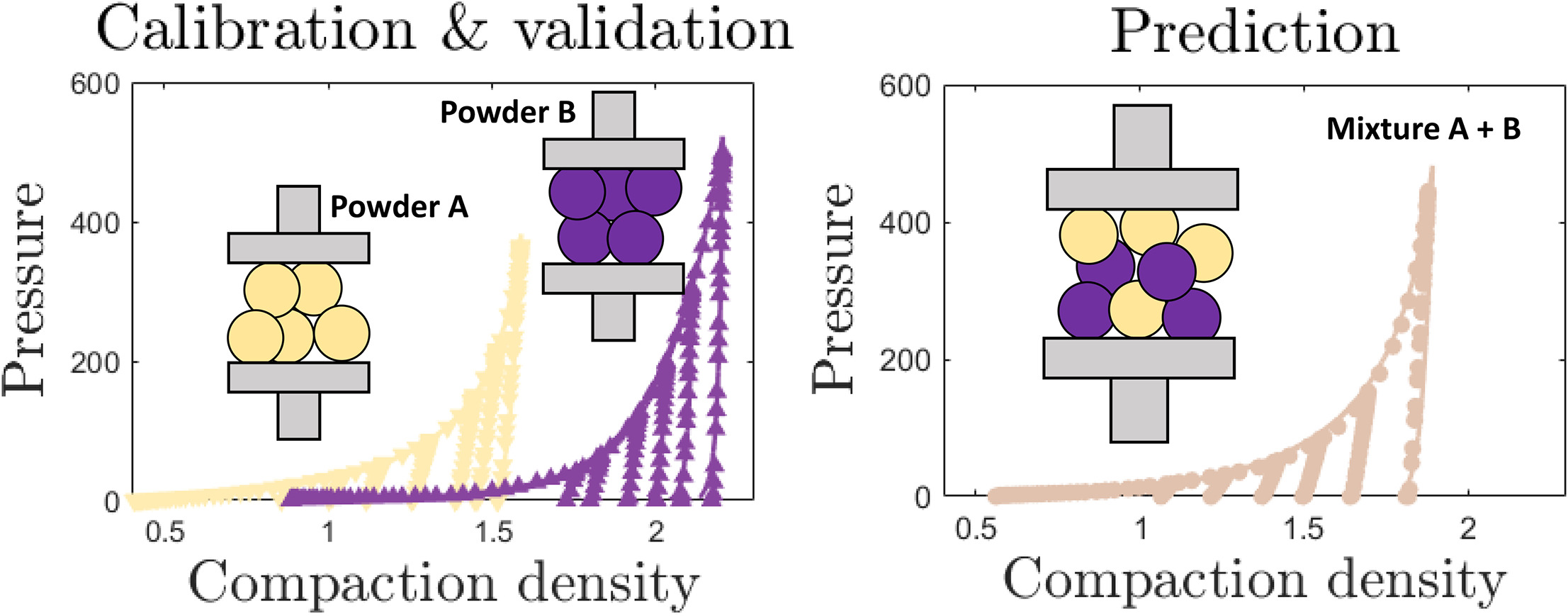Predictive modelling of powder compaction for binary mixtures using the finite element method

Despite the widespread use of solid-form drug delivery within the pharmaceutical industry, tablets remain challenging to formulate because their properties depend strongly on the powder composition and details of the compaction process. Powder compaction simulations, using the finite element method (FEM) in combination with the density-dependent Drucker-Prager Cap model, can be used to aid the design process of pharmaceutical tablets. Parametrisation is typically carried out manually and requires experimental data for each powder considered. This becomes cumbersome when considering different ratios of component powders. An automated parameterisation workflow was developed and validated using experimental powder mixtures of micro-crystalline cellulose and dibasic calcium phosphate dihydrate. FEM simulations reproduced experimental compaction curves with a mean error of 2.5% of the maximum compaction pressure. Moreover, a mixing methodology was developed to estimate parameters of mixtures using only pure-component parameters as input. The experimental compaction curves of mixtures were predicted with a mean error of 4.8%.
Continue reading here
About this article: Dingeman L.H. van der Haven, Frederik H. Ørtoft, Kaisa Naelapää, Ioannis S. Fragkopoulos, James A. Elliott, Predictive modelling of powder compaction for binary mixtures using the finite element method, Powder Technology,
Volume 403, 2022, 117381, ISSN 0032-5910, https://doi.org/10.1016/j.powtec.2022.117381.
Materials
The materials chosen for this study are micro-crystalline cellulose (MCC) of grade Avicel PH200® and dibasic calcium phosphate dihydrate (DCPD) of grade Emcompress premium®. Material grades were chosen to have similar particle-size distributions (Fig. S1) with a mean diameter ∼200 μm.

